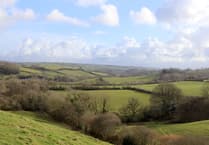Vicarys Mill, home for many years to Launa Windows, is the last presence of the Vicary family mills, which first had industry here in 1837, writes Eloise Rokirilov, vice chairman of Newton Abbot & District Civic Society
Prior to that, going back to the 1700s, the site was home to Bickfords paper mills. In 1786 10-year-old Moses Vicary, with his mother, arrived in Newton Abbot to inherit his father’s wool business, previously owned by the Branscombe family and bought out in 1837. Its work was in wool and leather.
The mill suffered two destructive fires in its time, in 1883 and 1921, but was rebuilt on both occasions, and only finally closed in 1972. This is also the year in which Hanbury Autogil took tenancy in the adjacent building.
At its height, Vicarys Mill employed around 300 workers, and the industrial site, including Benbows, provides a key iconic view from many points around the town.
Following Launa’s tenancy, there have been 11 years of ownership by the local authority. It is currently used as a storage unit by a nearby company.
The building is in poor shape, particularly the roof, having had no care or repair during this time. The outlying buildings stand proud but are in equally poor repair. Hanburys’ (privately owned) is also suffering from a leaking roof structure.
Many people don’t realise that in order to list a building, the application has to go through the Government’s Department for Digital, Culture, Media and Sport (DCMS).
Historic England, who answer to DCMS, will now rarely list buildings that have been altered or amended in any way, over the years, so their criteria are almost prohibitively tough. This is set by the Government.
Down from this, a community can ask their local authority for ‘undesignated heritage asset’ or ‘asset of community value’ status. It involves some digging on the local authority website.
As the Bradley Lane site is owned by Teignbridge Council, and there is an ambition in part to show they are exceeding the social housing numbers with the development plans, it will be a challenge to protect the mills and their heritage. Noticeably,
In 2014 TDC went through a similar process (having owned the Bradley Lane site since 2010) of granting planning permission to demolish the mill buildings. At the time, the partnership was with Teign Housing, this has since lapsed.
A presentation was given online to members of the town council in mid-September, and our own requests to see the drawings and plans have come to nothing. In that one-hour presentation, we understand no time was allowed for questions and answers.
While working on the options, we have already written voicing our concerns, and been met with silence, at the time of writing.
The cost of repairing such structures at an advanced stage of disrepair is of course high, yet there are opportunities for large scale funding, if we look hard enough.
There are countless examples around the country of heritage which has been successfully adapted to modern requirements, without loss or damage. Look at Dorchester Brewery, or the King William Yard in Plymouth, or recent plans seeking to protect and convert many derelict textile mills for housing in the Oldham region of the north.
Our heritage is our link to our proud history, and our ancestors and memories. It gives us a sense of place, continuity and pride.
It is up to all of us to help protect our heritage – the Civic Society exists to facilitate that, by membership, and being a voice for the town. We look forward to your support.
For more information go to the Newton Abbot & District Civic Society home page on Facebook.




